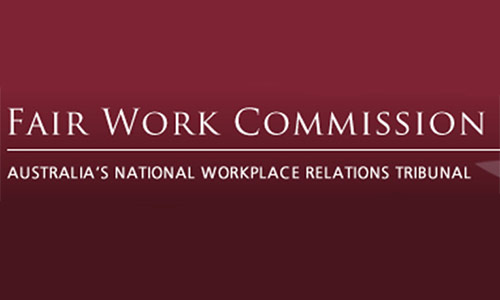The Fair Work Commission said, “bullying” was reasonable management action, and has rejected a long-serving employee’s bullying claim. The Commission accepted that the employer, Salvation Army Employment Plus, took reasonable management action when it performance-managed its employee after she resisted changes to workplace practices.
Commissioner Lee in a ruling issued 4 June 2015 said the issues raised by the Salvation Army Employment Plus job placement consultant in her bullying claim “are reasonable management action undertaken in a reasonable manner”. The Commissioner said the consultant particularly objected to a change that involved her seeking to place in jobs clients from the full “rainbow” of applicants, rather than just the “generally job ready” clients she had dealt with in her 9 years with the organisation.
The placement consultant told the Commission at the hearing in April that the change meant she was now required to deal with stream-4 clients who “may be somebody who is recently out of prison and they have drug issues, mental health issues, schizophrenia, they are considered not job-ready”. The consultant refused to deal with the stream-4 clients claiming it was unsafe, but Commissioner Lee, after considering evidence including a recent Worksafe inspection, said he was satisfied there was no such risk. Commissioner Lee said the change in client mix, alongside the employer’s new approach to performance management, “is a major driver” of the consultant making the bullying claim.
The consultant claimed she was being unreasonably performance managed and micro-managed.
The Commissioner said the consultant was “deeply distressed that her refusal to service ‘stream 4’ clients was the basis for the finding [in a performance assessment] that she was not meeting the values of the organisation”. The employer gave her a score of 57 out of 100 in her most recent assessment, against an average across all employees of 62, marking her down for failing to service the stream 4 clients.
Commissioner Lee said that it was “not unreasonable” for her refusal to “become a matter of note in her performance appraisal“, given that it was part of her position description. The Commissioner said Employment Plus had in the past failed to assess individual performance but while its introduction had been “a significant change” for the consultant, “the manner in which it has been introduced or administered does not appear to be unreasonable.”
Organisation shifting from “moribund” to “performance focussed“
Commissioner Lee said the organisation had shifted from “a long period of moribund management to an environment where the organisation is performance focussed… However, while this represents a significant change in her working environment, the fact that it occurred and the method of its implementation did not amount to bullying”.
Commissioner Lee said the change within Employment Plus was a response to the Salvation Army seeking to implement a “high performance culture” to turn around losses that meant the job agency was being subsidised.
Commissioner Lee said “She was forced to adjust to a more active management after a lengthy period of the organisation managing her and her colleagues very poorly… However, while this was a change that had a personal impact on the [consultant], particularly with the high turnover, there is no evidence that the approach taken amounted to bullying behaviour directed at the [consultant], particularly given the evidence of the timely replacement of vacancies in the organisation.”
[A. B. [2015] FWC 3353 (4 June 2015)]






